As the debate over patriotism renders unending in the contemporary political climate, thanks to the mainstream male-centric meta-narrative of the Indian history that some of the true ‘patriots’ who happen to be women are hardly revered and remembered adequately.
While a few compelling names like Rani Laxmi Bai, Sarojini Naidu, Sucheta Kriplani, Kamala Nehru, Capt. Laxmi Sehgal, Aruna Asaf Ali, and Vijaya Lakshmi Pandit are invoked time and again, many remain unsung and even sometimes, unheard of.
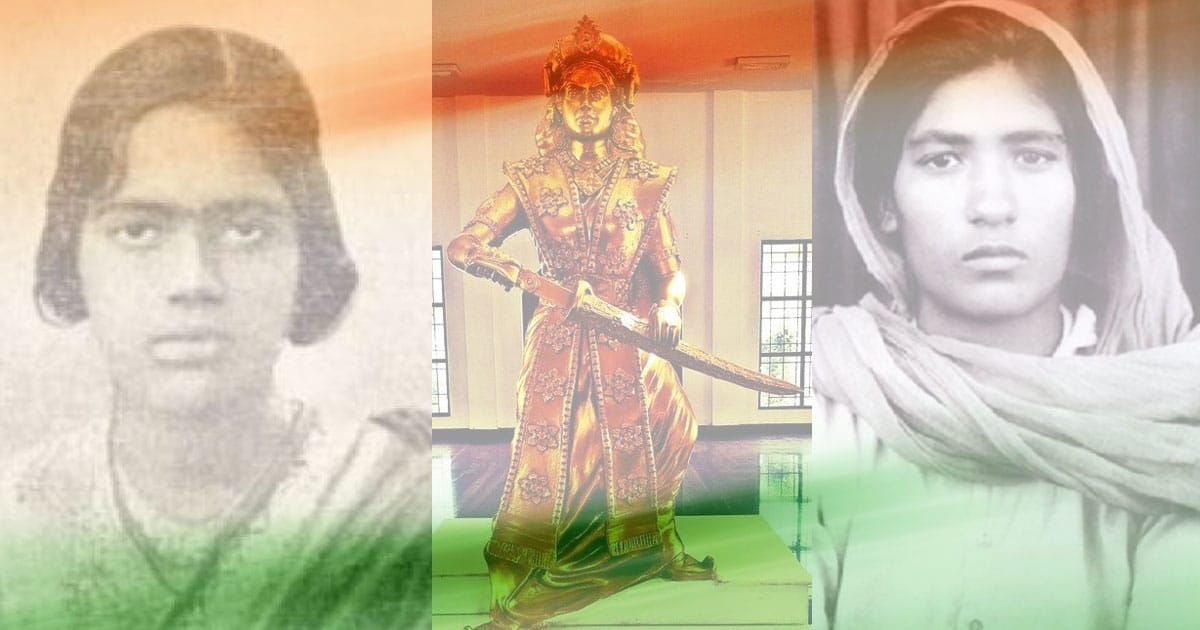
While the list is far from being exhaustive, we have compiled the contributions of these 17 lesser-known sheroes of India’s freedom struggle.
1. Uda Devi
Based in Lucknow, Uda Devi (-1857) was one of the first Dalit women to have participated in the Indian rebellion in 1857, famously known as the Sepoy Mutiny. Her husband Makka Pasi was a soldier of Awadh’s Hazrat Mahal and learning upon the threats on the sovereignty Uda Devi enlisted herself to fight against the British.
In the battle of Sikandar Bagh, she was believed to have climbed a pipal tree and shot down quite a few British soldiers as a sniper. Eventually, she was also shot down when the British opened fire on the tree.
2. Kittur Chennamma
Kittur Chennamma (21 October 1778 – 21 February 1829), also known as Rani Chennamma, was the queen of Karnataka’s Kittur, a vassal princely state of the Mysore empire. She is one of the first women freedom fighters in India’s struggle for independence.
Rani Chennamma fought vivaciously against the British ‘Doctrine of Lapse’ and led an armed battalion against the British East India Company in 1824 consisting of three-battles. She was eventually beaten in the fight and died while remaining imprisoned. Upon the demise of her husband Raja Mallasarja and son in 1824, her adopted heir Shivalingappa was being ousted by the British colonizers in the pretext of the doctrine.
3. Velu Nachiyar
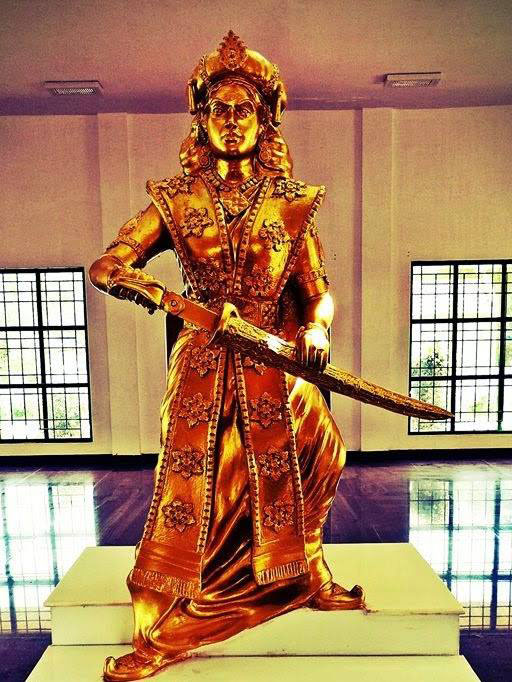
Velu Nachiyar (3 January 1730 – 25 December 1796), the queen of Sivaganga estate was the first in erstwhile India to stand against the British colonial power in India, even 77 years before India’s first war of independence.
She is popularly revered among the Tamils as Veeramangai (“brave woman”). Velu Nachiyar was the princess of Ramanathapuram and the only heir of the Ramnad kingdom who assumed power after her father and ruled along with her husband between 1750 and 1772 until he was killed in 1772 by the British army. The sonless king raised her like a male heir and taught her all the essential attributes of a fight. After her husband’s demise, she escaped with their only daughter Vellachi. Haider Ali, the erstwhile ruler of Mysore, was one of her prominent allies.
In 1780 she successfully fought the British and has been remembered to have developed one of the first suicide killing attempts in history with her Dalit commander-in-Chief Kuyili.
Also, read: 8 Great Indian Scientists Who Transformed The World With Their Vital Contributions
4. Jhalkari Bai
Born into a Dalit family, Jhalkari Bai (22 November 1830-4 April 1858) was known to be the shadow of Rani Laxmi Bai of Jhansi. Owing to her valor and courage, not only did she earned herself a position in Laxmi Bai’s women regiment Durga Dal but also soon rose to be one of her close aides. In fact, had it not been for her disguising herself as Rani Laxmi Bai when Jhansi was under siege by the British, Rani would not have gotten the opportunity to escape the fort safely to take the battle forward.
Jhalkari Bai is believed to have sacrificed her life during the siege while protecting Laxmi Bai. The legends surrounding her indicate that she was so courageous that she killed a tiger when she was attacked by it in the wild and thus, her bravery is an integral part of Bundeli folklores.
5. Matangini Hazra
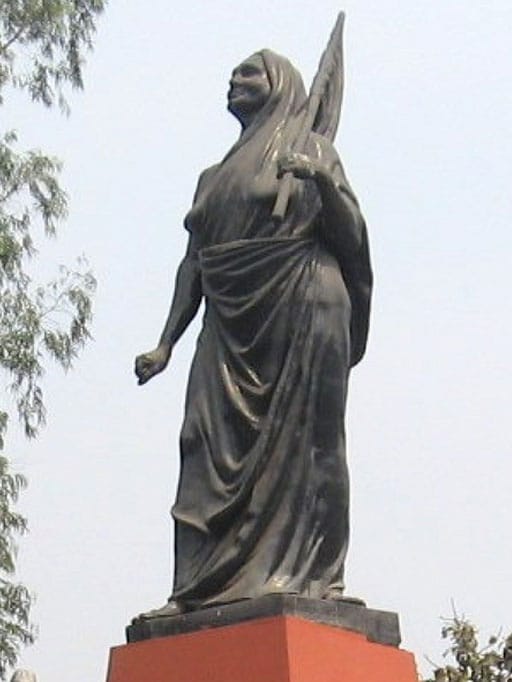
Matangini Hazra (17 November 1869 – 29 September 1942), also endearingly known as Gandhi Buri (an old lady) participated in India’s Quit India movement. Even before, she has always remained vocal against British rule. She hailed from West Bengal’s the-then Midnapore district where she led a procession of the movement in front of the Tamluk Police Station and kept on carrying and shouting Vande Mataram despite being shot trice by the British authority.
Matangini Hazra’s was the first post-independence statue of a woman to have been built in Kolkata in 1977.
6. Rani Gaidinliu
Gaidinliu (26 January 1915 – 17 February 1993) is one of the celebrated tribal woman figures of the Indian freedom movement. She is known as the Naga rebel who stood up against the British rule in India. She joined her cousin Haipou Jadonang in the Heraka religious movement, later turned into a political one, as a 13-year-old. The movement spurred in 1929, not only sought to throw the British out of Manipur and the adjacent Naga belt but also strongly opposed the missionary conversion efforts of the Nagas into Christianity.
Gaidinliu was eventually arrested in 1932 when she was 16 and was sentenced to life imprisonment by the colonial rulers. Jawaharlal Nehru upon meeting her at Shillong Jail in 1937 bestowed her with the title of Rani (Queen) and assured to expedite her release. Immediately after India’s independence in 1947, she was released from jail while she continued her efforts at uplifting the Nagas.
7. Kanaklata Barua
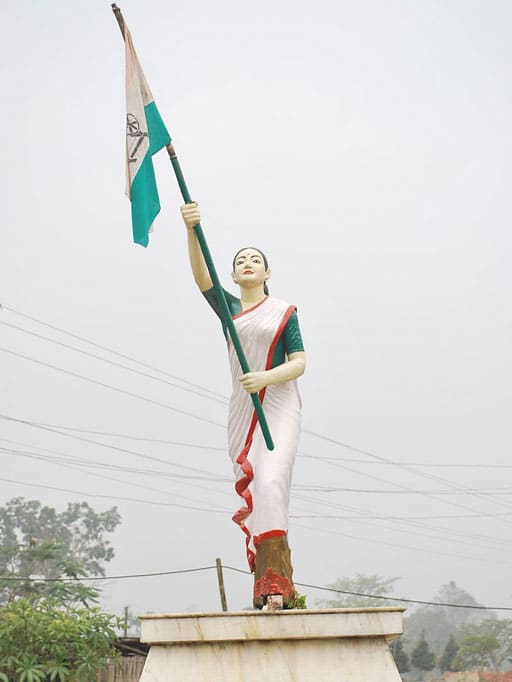
Kanaklata Barua (22 December 1924 – 20 September 1942), popularly known as Assam’s Birbala (the Brave Girl of Assam), joined the Mrityu Bahini (death squad) consisting of youths from the Gohpur subdivision of Assam during the Quit India Movement.
On September 20, 1942, a non-violent procession led by her decided to hoist the national flag at the local police station. Despite being warned of dire consequences, she was indomitable and held the flag high until she was shot and sacrificed her life at the age of 18. As she fell on the ground, her comrade Mukunda Kakoti took over the flag and was shot too.
8. Tara Rani Srivastava
Tara Rani Srivastav is another little-known woman figure of the Gandhian Quit India Movement, to the extent that the records of her life and death are unverifiable.
Born in Bihar’s Saran district, Tara Rani was married as a child to Phulendu Babu. Her contributions to consolidating women to fight against British rule are unforgettable. Upon being requested to organize a procession of the Quit India Movement in Siwan for hoisting the Indian flag, the couple led a march near the Siwan Police Station. The event quickly turned into an exhibition of police brutality with the police forces charging lathis and open firing on the protesters. As Phulendu Babu was shot during the procession, she bandaged him with her saree and marched on. Upon returning from the march, she learned of her husband’s passing.
Nonetheless, she continued being a part of India’s freedom struggle until India gained independence.
9. Moolmati
While history fondly remembers Ram Prasad Bismil, the founding member of the famous Hindustan Socialist Republican Association (HSRA), who was jailed and hanged in Gorakhpur jail for his involvement in Mainpuri Conspiracy case of 1918 and the Kakori Conspiracy of 1925, Moolmati, the mother behind his resolute revolutionary spirit is barely remembered.
A simple woman by nature, Moolmati not only supported her elder son in fighting for the country but also was ready for her younger son to devote to it too. While she was visiting Bismil in jail before execution, she remained stern while Bismil broke down. A proud mother as hers was not ready to belittle her son’s contributions by shedding tears for him.
10. Pritilata Waddedar

Pritilata Waddedar (5 May 1911 – 23 September 1932) a revolutionary from Bengal, inspired by the deeds of Rani Laxmi Bai, joined Surya Sen’s team of armed revolutionaries who were responsible for the well-known Chittagong armory raid.
Graduated in philosophy from Kolkata’s Bethune College where she was a staunch member of Chhatri Sangha (Women Students’ Association), Pritilata soon took the job of a headmistress in one of the English medium schools in Chittagong. As she was designated to lead a team of fifteen members in an armed attack on the Pahartali European Club which was gutted in fire in 1932, she was fatally injured in the skirmish. To avert being caught by the Police, she consumed cyanide and took her life at the age of 21.
11. Kalpana Datta
Kalpana Datta (Later, Kalpana Joshi after being married to CPI leader PC Joshi in 1943), a close friend of Pritilata’s, was also involved in the plan, though was arrested in the process a week before the attack. Eventually, despite being jailed twice, Kalpana was released in 1939 and consequently joined the Communist Party of India. She actively participated in the relief work during the 1943 Bengal famine.
12. Bina Das
Daughter of Beni Madhab Das and Sarala Devi, well-known Brahmo teacher and social worker from Bengal’s Krishnanagar, Bina Das (24 August 1911-26 December 1986), joined the Kolkata-based Chhatri Sangha while pursuing her education from the prestigious Bethune College.
On 6 February 1932, she fired at the Bengal Governor Stanley Jackson five times with a revolver supplied to her by another revolutionary woman figure Kamala Das Gupta in an assassination attempt at the Convocation Hall of the University of Calcutta. Despite the failed attempt she was caught and sentenced to nine years of rigorous imprisonment. Upon being released in 1939, she joined the Congress Party and was jailed multiple times during the Quit India Movement.
Bina Das married another freedom fighter from the erstwhile Jugantar group, Jatish Chandra Bhaumik, in 1947. Her sister Kalyani Das has also contributed towards the Indian freedom struggle.
13. Durgavati Devi
Durgavati Devi (7 October 1907 – 15 October 1999), fondly known as Durga Bhabhi, came in touch with the HSRA revolutionaries by the virtue of being married to Bhagwati Charan Vohra, an active member of the group and a close aide of Bhagat Singh and Chandra Sekhar Azad.
As the group members often used to come to Vohra’s house, among the revolutionary circles of the country she was started being recognized as Bhabhi (elder brother’s wife) whose resilience, courage, and revolutionary fervor were distinctly noteworthy.
Durgavati Devi was the key figure in helping Bhagat Singh to elope in disguise after Saunders’ killing and accompanied him through the train journey. After Bhagat Singh surrendered in 1929, she made an assassination attempt at Lord Hailey. Though he escaped the attack unscathed, many of his associates were killed and Durgavi received three-years of imprisonment.
Durgavati Devi also sold her ornaments to help Bhagat Singh and his associates during the trial. Post-independence she led a modest life while working on areas of social progress.
14. Gulab Kaur
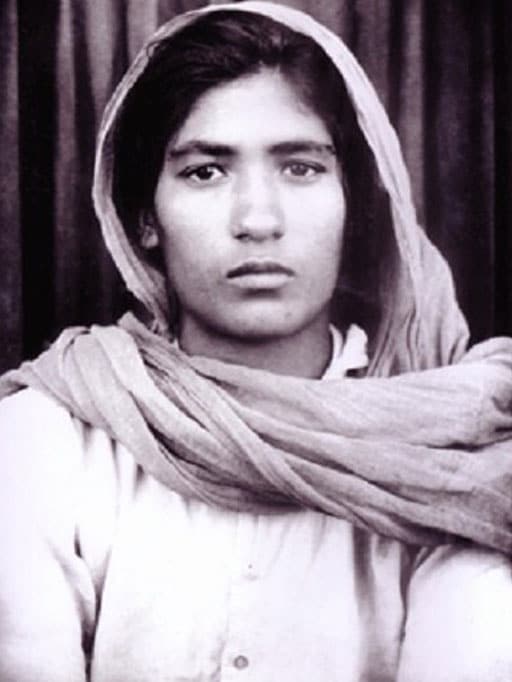
Hailed from Punjab’s Sangrur district, Gulab Kaur (1890-year of death unknown) was married to Mann Singh and the couple migrated to Manila, Philippines. During their stay in Manila, they were exposed to the members of the Ghadar Party, an organization set up by the Indian immigrants in California for liberating the country from the grapple of the British Raj. She possibly may have joined the party in 1913.
Disguised as a journalist, Gulab Kaur distributed arms among the party members and has inspired Indian immigrants in ships with her speeches and lectures. She was sentenced to a prison in Lahore for the charges of sedition for two years.
15. Rukmini Lakshmipathi
Rukmini Lakshmipathi (6 December 1892-6 August 1951) was a noted female politician cum freedom fighter of Indian National Congress belonging to a landlord family based in erstwhile Madras. She joined the party in 1923 and participated in the International Women’s Suffrage Alliance Congress in Paris three-years later as an Indian representative.
In 1930, Rukmini Lakshmipathi became the first woman to be imprisoned for the Salt Satyagraha Movement. She was also the first and the final woman to have been elected to the Madras legislature and served as its minister under the British rule. Post-independence she maintained her political career as an important figure from Tamil Nadu.
16. Rajkumari Gupta
As the history of Kakori Conspiracy of 1925, which robbed a Lucknow-bound train at the Kakori station, is etched in our mind, hardly due credit is given to Rajkumari Gupta (Born in 1902 in Kanpur district) for successfully supplying arms to the HSRA revolutionaries for the successful execution of the conspiracy.
Merely at the age of 13, Rajkumari Gupta was married to Madan Mohan Gupta, an active Congress member and a follower of Mahatma Gandhi. Owing to her disenchantment over the abrupt stoppage of the Non-cooperation Movement in 1924, she was drawn more into the revolutionary ideas and landed in the close circle of Chandrashekhar Azad. She committed to delivering firearms to the revolutionaries without the knowledge of her husband and was severely admonished by her family members. Though not enough is known of her, she remained away from the limelight even after independence.
17. Accamma Cherian
Accamma Cherian (14 February 1909-5 May 1982) is a prominent figure of Kerala’s political scenario. Praised by Mahatma Gandhi as the ‘Jhansi Rani of Travancore’.
Accamma Cherian was a brave-heart who not only led a mass rally in the state’s Thiruvananthapuram district but also stood in front of the British wrath asking them to shoot her first. A well-educated Accamma gave up her teaching profession to join India’s freedom struggle and established the Desasevika Sangh for inspiring more women to join the movement.
No list is in fact enough to uphold women’s contributions in the history of the country’s freedom struggle. Despite being pulled down due to the structural conditioning of erstwhile India, women came out of their homes and conquered.
From shielding men by taking bullets to sacrificing sons for the soil, they were determined, resilient, and brave. Patriotic chest-thumping that culminates into denigrating women in contemporary India should remind itself of the true meanings of sacrifice, valor, and love for the country.
Our salute to all the sheroes we know, and to the ones we are yet to learn about.

